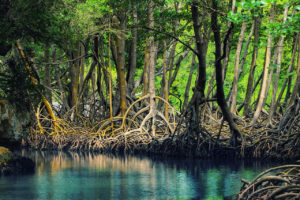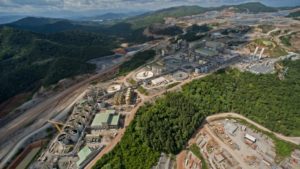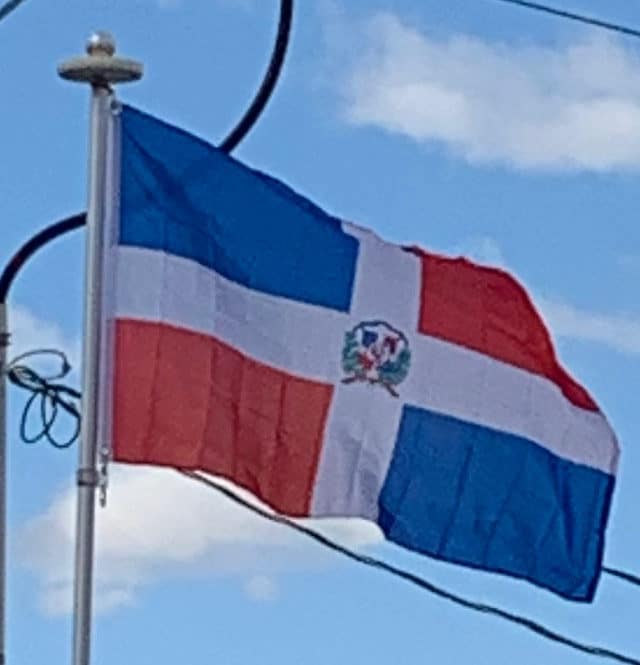There are many lakes and coastal lagoons. The largest lake is Enriquillo, a salt lake at 45 metres (148 ft) below sea level, the lowest point in the Caribbean. Other important lakes are Laguna de Rincón or Cabral, with fresh water, and Laguna de Oviedo, a lagoon with brackish water.
There are many small offshore islands and cays that form part of the Dominican territory. The two largest islands near shore are Saona, in the southeast, and Beata, in the southwest. Smaller islands include the Cayos Siete Hermanos, Isla Cabra, Cayo Jackson, Cayo Limón, Cayo Levantado, Cayo la Bocaina, Catalanita, Cayo Pisaje and Isla Alto Velo. To the north, at distances of 100–200 kilometres (62–124 mi), are three extensive, largely submerged banks, which geographically are a southeast continuation of the Bahamas: Navidad Bank, Silver Bank, and Mouchoir Bank. Navidad Bank and Silver Bank have been officially claimed by the Dominican Republic. Isla Cabritos lies within Lago Enriquillo.

The Dominican Republic is located near fault action in the Caribbean. In 1946, it suffered a magnitude 8.1 earthquake off the northeast coast, triggering a tsunami that killed about 1,800, mostly in coastal communities. Caribbean countries and the United States have collaborated to create tsunami warning systems and are mapping high-risk low-lying areas.
Economy:
The Dominican Republic is the largest economy in the Caribbean and Central American region. It is an upper middle-income developing country, with a 2015 GDP per capita of US$14,770, in PPP terms. Over the last two decades, the Dominican Republic has had one of the fastest-growing economies in the Americas – with an average real GDP growth rate of 5.4% between 1992 and 2014. GDP growth in 2014 and 2015 reached 7.3 and 7.0%, respectively, the highest in the Western Hemisphere. In the first half of 2016 the Dominican economy grew 7.4%. As of 2015, the average wage in nominal terms is US$392 per month (RD$17,829). The country is the site of the second largest gold mine in the world, the Pueblo Viejo mine.

During the last three decades, the Dominican economy, formerly dependent on the export of agricultural commodities (mainly sugar, cocoa and coffee), has transitioned to a diversified mix of services, manufacturing, agriculture, mining, and trade. The service sector accounts for almost 60% of GDP; manufacturing, for 22%; tourism, telecommunications and finance are the main components of the service sector; however, none of them accounts for more than 10% of the whole. The Dominican Republic has a stock market, Bolsa de Valores de la Republica Dominicana (BVRD) and advanced telecommunication system and transportation infrastructure. Nevertheless, government corruption, and inconsistent electric service remain major problems. The country also has “marked income inequality.” International migration affects the Dominican Republic greatly, as it receives and sends large flows of migrants. Mass illegal Haitian immigration and the integration of Dominicans of Haitian descent are major issues. A large Dominican diaspora exists, mostly in the United States, contributes to development, sending billions of dollars to Dominican families in remittances.
